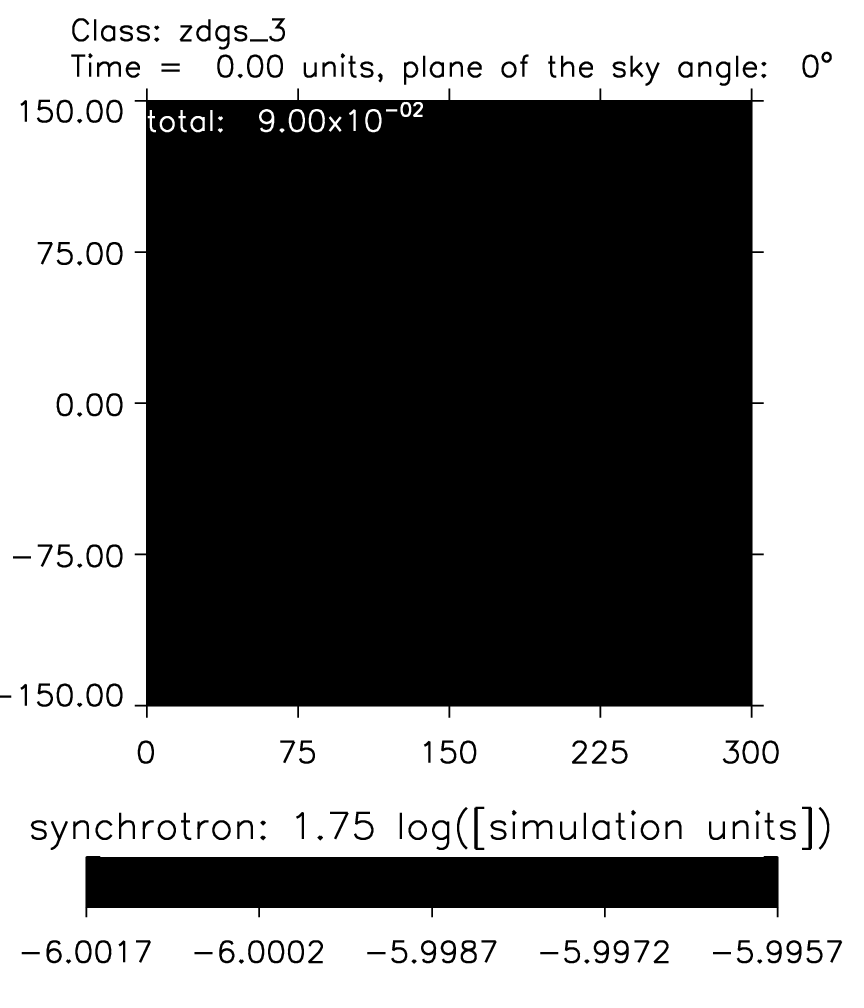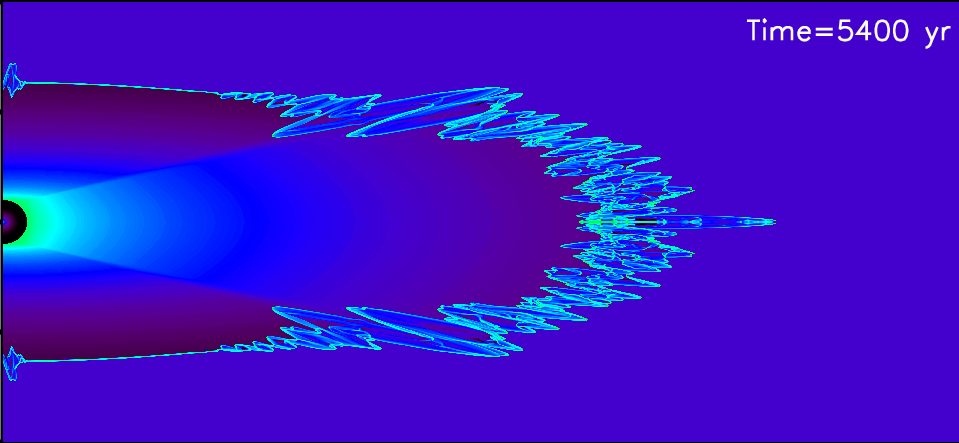Our codes and algorithms are fine-tuned in order to follow the physical processes, especially within the regions where new stars may form. This requires detailed cooling and some chemistry to be followed as a cloud of gas fragments and contracts, collapses or disperses in adjacent parts.
CAPS has access to a dedicated SGI supercomputer, the Forge, with parallel memory, as well as to School facilities.

A simulation of a radio galaxy driven by a jet of gas which changes direction, describing a circle. Shown is the simulated emission as seen through light emitted at radio frequencies. The emission is caused by the spiralling of electrons accelerating around a magnetic field at relativistic speeds.
Simulations and interpretations of many observed objects, from planetary nebulae to radio galaxies, are founded on Astrophysical Fluid Dynamics. The consequences of shock wave impacts as observed supersonic and hypersonic motions are brought to a halt are explored with multi-dimensional simulations. In astronomy, the radiation from the impact zones is intensified through directed jets and outflows emanating from and emerging protostars and super-massive black holes. Comparing the predicted interaction with the interstellar and extragalactic media provide the basis for a deeper understanding.
How new generations of massive stars are created is recognised as a crucial issue in our quest to interpret the spiral structure of our Galaxy, the Milky Way. Within CAPS, models are constructed in order to account for both suppression and amplification through regulation and triggering. The intricate interactions must stretch across vast scales, from stellar cores and small clusters to giant molecular clouds.
Ongoing Theoretical Projects:
1) The first galaxies to form in our Universe appeared in an environment that was crowded and dense. Mergers and close encounters led to growing black holes with a massive diet. The result is the production of intense outflows as the objects regurgitate. We are striving to predict how these ejections differ from those we see nearby – the classic radio galaxies. Three dimensional hydrodynamics have provided a basis but now we need to go further by including the magnetic field and relativistic motion.
2) Planetary Nebulae are shaped by winds which blow from the surface of an evolved star. Can the shapes be explained and, in doing so, can we understand what drives the winds and what physics is responsible for the emission we detect? This ongoing project with student Igor Novikov has revealed the contrasting properties of molecular and atomic winds.
3) Stars are born and raised within the obscuring clouds from which they form. The key metamorphosis occurs during the protostellar stage. Unfortunately, the protostar is hidden during this stage and we rely upon observations of the surrounding dense clump with which it interacts. In this project, theoretical tracks for the evolution of massive stars are calculated and the predictions tested in order to exclude or confirm the fundamental models for protostars. This project aims to generate these tracks by interfacing an accurate stellar evolution code with basic models for the simultaneously evolving environment, thus relating the measurable quantities of clump mass, temperature, luminosity and outflow momentum.
For more information on all of these projects contact Prof. Michael Smith.
